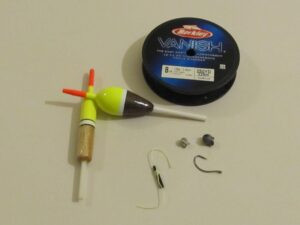You may have heard of float fishing but are unsure what is meant. Float fishing is merely using a bobber or float to present bait. The concept is easy, yet there are many variations to the form of fishing. In many instances, the species of fish implies how you set up a rig and which bait.
Estimated reading time: 7 minutes, 25 seconds. Contains 1484 words
Table of Contents
- Float Fishing Set-Ups
- What is Needed for Float Fishing
- How to Use a Bobber Stop
- Baits for Float Fishing
Anglers for generations have done float fishing in one form or another. Today it is common for panfish, trout, carp, and other species. As an angler, you have to learn the bait best for each species in the water where you go fishing. There are basic recommendations that tend to work in many places. Yet, sometimes one bait is superior to all others in a specific waterway.
Float Fishing Set-Ups
Float fishing is popular in some areas. In the Pacific Northwest, it is common to use a float set up for steelhead. In Europe and some portions of North America, it is an effective technique for carp. The setup or rigging is a key element of float fishing. In some places, a fixed float works well. The sliding or slip float is better in other conditions or places.
You have to consider the casting distance, presentation depth, and water flow choosing a setup. The sliding float makes the longer casts and deeper presentations possible when you need them.
What is Needed for Float Fishing
Float fishing does require a few pieces of terminal tackle. You will need a few floats in different types and sizes. Also, the technique may require stops, weights, swivels, beads, and leader lines. Each rig varies slightly making several sizes of the items needed.
- Floats, both slip and fixed in several sizes
- Bobber stops
- Beads
- Swivels
- Weights
- Leader line
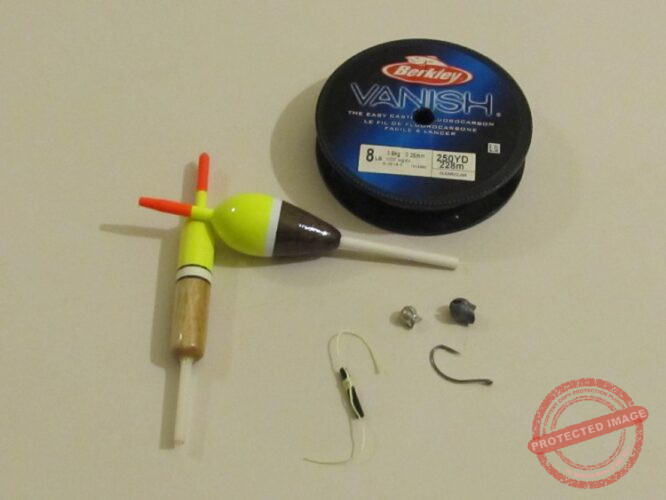

Setting up a float rig depends often on the species and waterway. In shallow water, a fixed float works well. In deeper water, a slip float is usually the better option. Since it allows casting farther. Plus in deeper water, you need more weight to get the bait down deep. This leads to using different sizes of floats. In the picture, a slip float is on the left and the fixed float is on the right.
How to Use a Bobber Stop
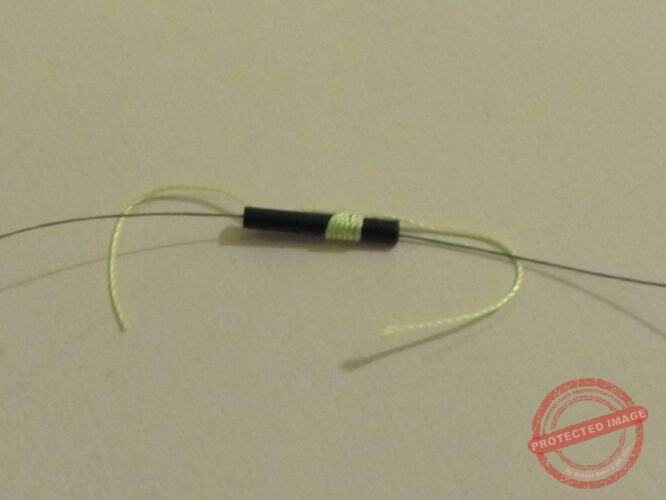
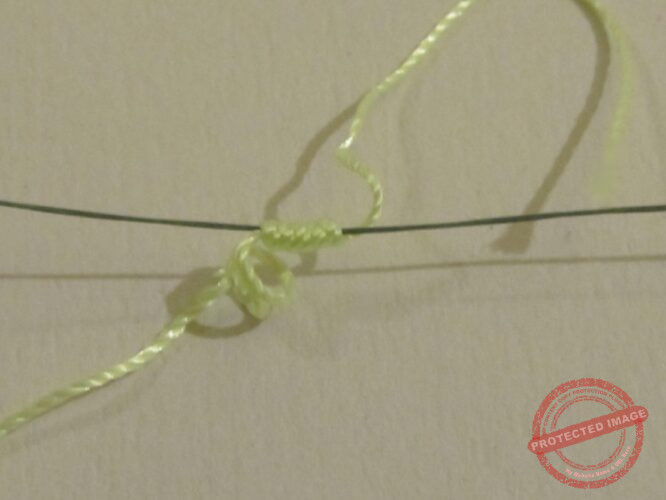
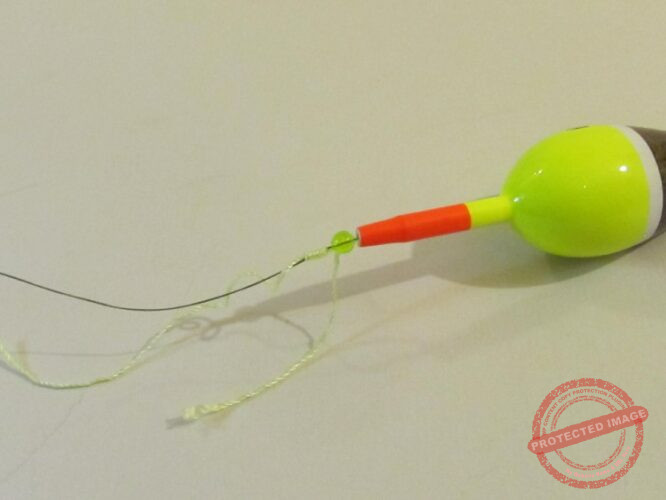
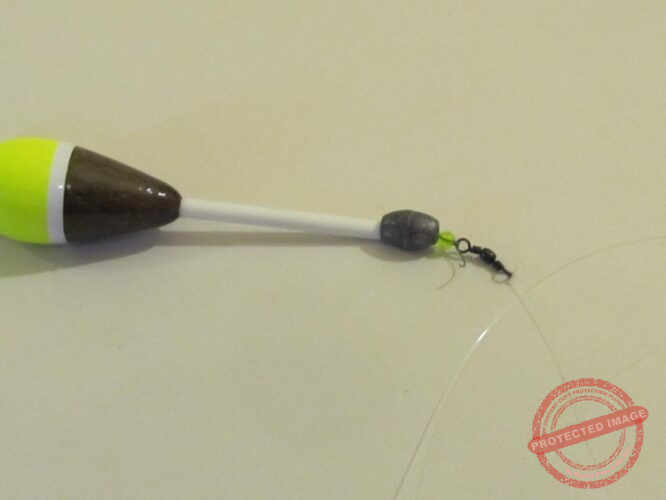
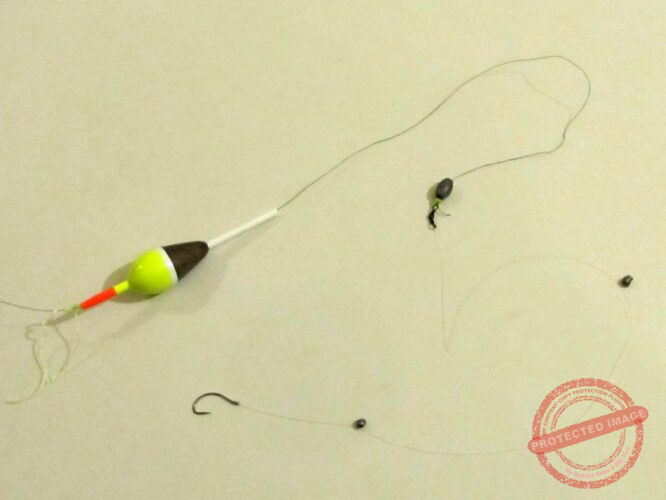
The completed rig should look like the photo above. The line tags on the bobber stop need to be trimmed ( left on for the photo for clarity). On the leader are a hook and a few split shots for live bait fishing. Spreading the weight out helps give a natural look to the bait. Use enough weight to keep the bait down and look natural in the water.
The bobber stop will pass through the guides once trimming is done. It also can be wound onto the spool of many reels. The spinning reel has no issues with the stop. Some baitcast reels will have the stop get caught in the line guide on the reel.
Do not pull completely tight until in the proper position. When the stop is in the correct place for the depth. Pull completely tight and trim the line tags as close as possible to the stop.
Variations to Float Fishing Rigs
In place of the split shot and hook, a lure can be used instead. The use of jigs or a worm-style rig is common. Also, the weight and swivel can be replaced with an inline weight.
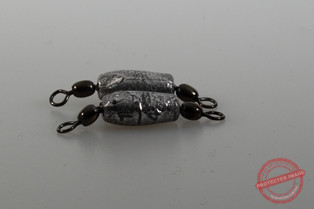
The inline weights are used with the rig by many anglers. This eliminates the sliding weight and swivels in the set-up shown above in the picture. The method in the photo is cheaper since inline weights cost over a dollar each.
The Lindy Rig
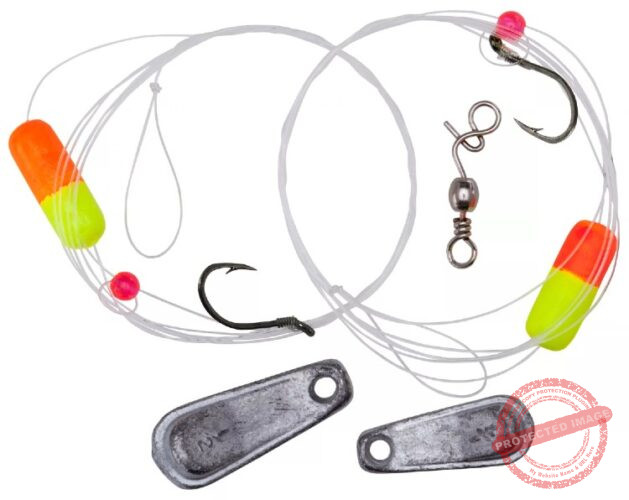
Use the Lindy rig when you want a bait a few inches up to 2 feet from the bottom. The rig uses snell floats placed on the leader. These floats are slid up close to the hook and will lift the bait off the bottom. Rigging is easy, slide a sinker onto your main line. Add a bead and tie on the swivel. Place a hook and snell float on the leader line. Tie the leader line to the swivel.
The rig is effective for many species of fish. This rig was introduced decades ago by the Lindner brothers. They designed the Lindy Rig for walleye fishing. Anglers use it a lot since it is productive for all fishing. Catfish anglers use the same rig with larger floats.
Using a fixed float only needs to be clipped or attached in place on the line. It does not require a stop. In some instances, the swivel and leader are not needed. Using weight in the same manner as the slip float is recommended. Always place the weight for a natural appearance with baits.
Baits for Float Fishing
The bait you use will depend on the fish species. A few fish lures do work, but in many instances live bait is the best. Each type of fish tends to have a preference for the bait. They are accustomed to the food that is available in the environment. This is what people call “match the hatch” in fishing.
The term live bait is for anything other than lures you use to catch fish. In carp fishing, people use grains for bait. When lures are spoken about, I will specify the lure. This will clarify the setup or rig for anglers with little experience.
Baits for Steelhead
Using live baits for steelhead is proven successful. Salmon eggs and roe sacks work the best. At times, minnows and nightcrawlers are effective. All the baits work with float fishing. The float keeps the line off the bottom allowing the bait to bounce naturally.
Live Baits
- Eggs/roe sacks
- Shiners/minnows
- Nightcrawlers
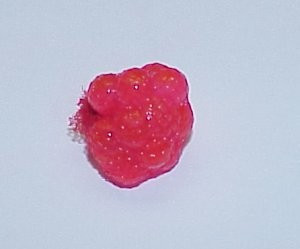
Lures work well also for steelhead trout. There are jigs made specifically for steelhead. Soft plastics are common for float fishing too. The lures tend to be smaller than the lures used in bass fishing. Look for soft plastics 3-4 inches instead of the longer baits for bass fishing.
Lures
- Jigs
- Steelhead worms
- Soft Beads
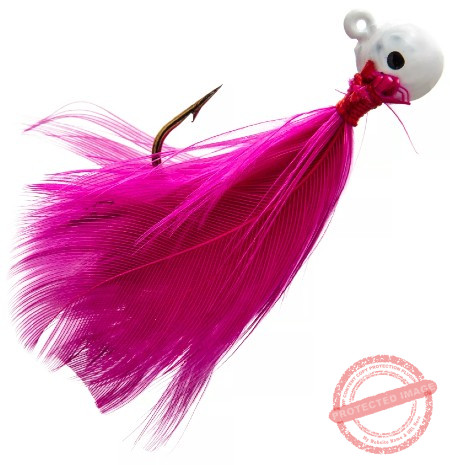
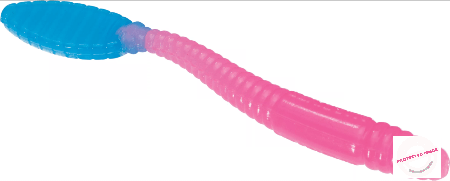
Baits for Carp
Inexperienced anglers have the idea carp are bottom feeders. This is not true since carp feed on the surface or close to the surface. Carp are like other fish and seek food throughout the water column. Seeing carp on the surface is when to try float fishing to catch them.
Carp feed on grains or nightcrawlers. Using corn, dough ball, or bread works well. These are low-cost baits for carp fishing. You can make the bait at home with a few ingredients from the grocery store. The bait works for catfish and suckers along with the carp.
Bait for Carp
- Doughball
- Corn
- Bread
- Worms or nightcrawlers
- Maggots
Use either the surface or bottom float method. Having the bait up off the bottom makes it visible to fish. A small amount on the hook is all that you need for fishing with the float method. It is important to use the smallest float possible since carp will drop a bait when tension is felt.
Baits for Panfish
People learn float fishing on panfish. The old-style round bobbers are commonly used by beginners. Instead of the round bobber try the stick or bulb-style floats. These floats reduce the tension a fish feels when taking the bait. A fish tends to keep the bait in its mouth longer. This results in catching more fish.
Panfish Bait
- Redworms
- Maggots
- Meal worms
- Bread
Baits for panfish are mainly insects. Use maggots, mill worms, or redworms. Bread or Slim Jims will work if other baits are not available.
Small jigs work with panfish also. These are 1/32 or 1/16th ounce jigs with smaller hooks and soft plastics.
Fishing for panfish is easy and the best way to practice fishing with floats. An inexperienced or beginner angler can practice the techniques to learn. Once an angler knows the methods, they can be used for many species of fish.
Baits for Walleye
Walleye fishing with floats is limited to slip floats or Lindy rigs. These fish feed in deeper water. The baits walleye prefer are minnows, leeches, and nightcrawlers. Shore anglers will find the Lindy Rig easy and productive. Fishing in a boat on either rig works very well.
Walleye Baits
- Minnows
- Leeches
- Nightcrawlers
Try keeping it simple for walleye using floats. It is another method to work into the techniques successful for walleye fishing.
Conclusion
Float fishing is a technique anglers often overlook. There are variations to the style for many species. Using a float is an old-style technique few anglers take the time to learn. It is an effective method to use when other presentations are failing. Learn the technique to add more options to catching fish.
John McIntyre
